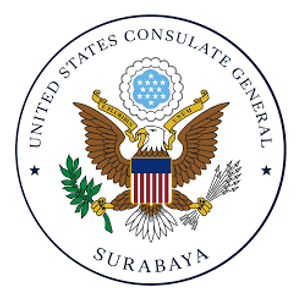Search by property
From BASAbaliWiki
This page provides a simple browsing interface for finding entities described by a property and a named value. Other available search interfaces include the page property search, and the ask query builder.
List of results
- Sepukin + (to be hit by a moving force such as dust or water)
- Abab + (to destroy)
- Ngéér + (to disregard, make light of, or belittle; neglect)
- Maider + (to go around (eg shrine, bale agung))
- Makaplagan + (to have an accident in which one hits a non-moving object)
- Ngayahang + (to help or assist)
- Nyuled + (to ignite with a spark)
- Makudus + (to make smoky or to burn)
- Pekakas + (tools materials, implements, equipment)
- Bukur + (tower all, tiered tower, decoratede white … tower all, tiered tower, decoratede white ande yellow, carried on the shoulders of a group of men to transport sekah to sea or nearby body of water at end of ceremony called nyekah in which spirit of deceased is elevated to highest purity and made ready to be installed in family temple. The spirit resides in the sekah, which is an effigy of the deceased. The bukur is burned next to the water and thrown in.is burned next to the water and thrown in.)
- Dulang + (tray food container, usually used to mean a circular plateform shaped like a double cone, a round tray with a flared conical base used as a support for offerings, or to display them, or for carrying offerings to a temple ceremony)
- Cetok + (trowel mason's trowel (vs. cetak = print))
- Bhur + (underworld world of demons)
- Nyahcah + (up, cut into small pieces, e.g. manioc (ubi), sweet potato (sela) when preparing for drying)
- Mapekakas + (use household equipment)
- Mekakasin + (using or installing equipment)
- Perbekel + (village head)
- Patajuh + (village official entrusted with temple accounts)
- Laku + (way, path, conduct, location of something alive)
- Mamendak + (welcome)
- Pamendak + (welcoming, offering made to welcome gods' arrival at temple)
- Was + (well)
- Leluur + (white cloth that is hung under the roof of a shrine or used as the roof over a corpse)
- Pletik + (white spot on the forehead or at the temple of the dancer)
- Ngayah + (work without pay, contribute work, (temple))
- Ngeseng + (destroy, as, for example, burning temple equipment that is no longer used or useful or to burn a shrine before moving it to a new location)
- Pipis bolong + ("Chinese money, known generally as Uang Ke … "Chinese money, known generally as Uang Kepeng in Indonesian, or as Pis Bolong in Balinese, is known through the ancient Lontar records to have circulated as a medium of exchange since at least 900 AD, and perhaps much longer. Throughout this time, Uang Kepeng touched on all aspects of Balinese life: cultural, religious, social, political and economic. Today, Uang Kepeng is used only for ceremonial purposes, while the economic aspects have withered away with the rise of a united Indonesia."away with the rise of a united Indonesia.")
- Tingkih + ((Euphorbiaceae))
- Selendang + (A long and narrow textile worn around the anteng (for women), and a shorter one worn around the waist over the kebaya - or for men if a saput is not used. It is a must to wear a selendang or saput when entering a temple and for praying.)
- Odalan + (Anniversary festival of a temple)
- Adake + (Does that location exist?)
- Wéntenké + (Does that location existe)
- Eka Dasa Rudra + (Largest of the state-wide Balinese ceremon … Largest of the state-wide Balinese ceremonies that is supposed to be held once every 100 years at Pr. Besakih, culminating on Tilem Kesanga. The last such ceremony was held in 1979, with its climax on Tilem Kesanga, March 28 eka Dasa, meaning eleven, refers to the eleven directions, the four cardinal points, the four intercardinal points, up, down, and center. Rudra refers to Siwa in his destructive form as the Aryan god Rudra. Previous to 1979 the ceremony was held in 1963 because of especially inauspicious circumstances, but it was interrupted by the eruption of Gunung Agung.terrupted by the eruption of Gunung Agung.)
- Dunung + (Making a location a place of refuge or lodging)
- Nyegara gunung + (Nyegara Gunung is a Balinese Hindu philosophy that between the sea (segara) and the mountain (gunung) is an inseparable unity. Therefore, every action on the mountain will have an impact on the sea. Vice versa.)
- Malpal + (One of the foot movements in Balinese dance (male dancers) is done by moving the feet from top to bottom quickly)
- Besakih + (Pura Besakih is a temple complex in the village of Besakih... It is the most important, the largest and holiest temple of Hindu religion in Bali...The entrance is marked by a candi bentar (split gateway)...)
- Candi bentar + (Split temple gates)
- Kamasan + (Style of painting. Imagine you are a mast … Style of painting. </br>Imagine you are a master Balinese painter, and your King has recently commissioned you to do a piece of work.</br>As you sit down in front of a large cloth stretched upon a wooden frame with a pencil in hand, for a moment you contemplate the composition before beginning to sketch. The year is 1723. What would go through your mind?</br></br>Possibly you hear the clash and bang of metallic instruments of a Balinese ensemble. You visualize the cloth in front as a giant screen, with an audience seated on the opposite side. And you imagine yourself as a dalang (master puppeteer) manipulating puppets while bringing to life a mighty Hindu epic during a wayang kulit shadow theatre play.</br></br>Origins </br></br>The roots of the wayang puppet theatre, one of the original story-telling methods in the Balinese culture, may be traced back over 2,000 years to Indian traders who settled in Nusa Antara (Indonesia prior to being known as the Dutch East Indies), bringing with them their culture and Hindu religion. The wayang or classical style of Balinese painting is derived from the imagery that appears in this medium.</br></br>The paintings were made on processed bark, cotton cloth and wood and were used to decorate temples, pavilions, and the houses of the aristocracy, especially during temple ceremonies and festivals. Originally the work of artisans from the East Javanese Majapahit Empire (13-16th century), this style of painting expanded into Bali late in the 13th century and from the 16th to 20th centuries, the village of Kamasan, Klungkung, was the centre of classical Balinese art – and hence the Kamasan paintings.</br></br>The original works were a communal creation; the master artist shaped the composition, sketching in the details and outlines, and apprentices added the colours. These works were never signed by an individual and considered a collective expression of values and gratitude from the village to the Divine. Colours were created from natural materials mixed with water; i.e. iron oxide stone for brown, calcium from bones for white, ochre oxide clay for yellow, indigo leaves for blue, carbon soot or ink for black. Enamel paint introduced by the Chinese a few hundred years ago was used on wooden panels of pavilions and shrines, or upon glass.</br></br>Divine and demonic</br></br>The highly detailed, sacred narrative Kamasan paintings play an essential role within the Balinese culture functioning as a bridge communicating between two worlds: the material world humans inhabit and the immaterial world of the divine and demonic forces.</br></br>The artist functions as a medium translating the esoteric and invisible into a comprehendible visual language and bringing greater understandings to the mysteries of life according to scriptures and philosophies.</br></br>According to Dr. Adrian Vickers, Professor of Southeast Asian Studies at Sydney University, “The key to Kamasan painting’s sense of beauty is the beautiful flow of line and the pure flat figuration.”</br></br>For foreign audiences, the paintings, however, present difficulties in their understanding. Without a concept of the landscape in Balinese paintings, it’s about an arrangement of items on a flat surface akin to the shadow puppets against the screen in shadow theatre. Unlike Western modern art where paintings generally have one focal point, there is no central focal point to read the Kamasan narratives. Most of the paintings have multiple stories that may be read in all areas around the composition.</br></br>Looking at the painting, it is full of visual information to the extent that nothing stands out. Tight, generalized, often repetitive patterning, often of decorative motifs and combinations of graphic patterns are distributed all across the surface leaving little or no blank areas. Ornamental elements, rocks, flowers motifs and painted borders indicate Indian and Chinese influence from Chinese porcelain and Indian textiles.</br></br>“Adherence to established rules about the relative size of parts of figures related to measurements in the human body – in the Balinese perspective each measurement is seen as a human manifestation of elements that exist in the wider cosmos. Correctness of proportions is part of being in tune with the workings of divine forces in the world. Colours are also codified.” says Vickers in his book Balinese Art Paintings & Drawings of Bali 1800-2010. “Form evokes spirituality.”</br></br>The three realms</br></br>The two-dimensional Kamasan compositions generally depict three levels: the upper level is the realm of the Gods and the benevolent deities, the middle level is occupied by kings and the aristocracy, and the lower third belongs to humans and demonic manifestations. Details in facial features, costumes, body size and skin colour indicate specific rank, figure or character type. Darker skin and big bodies are typical of ogres, light skin and finely portioned bodies are Gods and kings. Rules control the depiction of forms; there are three or four types of eyes, five or six different postures and headdresses. The position of the hands indicates questions and answers, command and obedience.</br></br>The narratives are from the Hindu and Buddhist sacred texts of Javanese-Balinese folktales and romances: the Ramayana, Mahabharata, Sutasoma, Tantri, also from Panji. Astrological and earthquake charts are also depicted. Major mythological themes are rendered in great symmetry, while these paintings contain high moral standards and function to express honourable human virtues to society with the intent to encourage peace and harmony. A beautiful painting communicates balance, aesthetically and metaphorically, and is equated to the artist achieving union with the divine.</br></br>Traditional Kamasan painting is not static and keeps evolving as subtle changes have occurred over time as each artist has their own style, composition and use of colour. It is common that new works regularly replace old and damaged ones and hence Kamasan painting is an authentic living Balinese tradition.</br></br>https://indonesiaexpat.id/lifestyle/kamasan-paintings-bali/esiaexpat.id/lifestyle/kamasan-paintings-bali/)
- Usaba + (Temple festival.)
- Parasparan jagat + (The Balinese synonym for "ecosystem", deri … The Balinese synonym for "ecosystem", derived from Sanskrit origin. Balinese language has no single lexical term for ecosystem, but it has a longer phrase of similar meanings. Based on comparison of the meanings, the Balinese word for ecosystem is either "parasparan jagat" or "parasparan prani". "parasparan jagat" or "parasparan prani".)
- Tabuh rah + (The ceremonial spilling of blood performed usually with a regulated series (i.e., no sanctioned gambling) of three cockfights (tajen), done to appease the ground spirits (buta kala) before a major temple ceremony such as a piodalan.)
- Beringin + (Tree considered holy in Bali, often decora … Tree considered holy in Bali, often decorated with black white checkered cloth, and situated in the middle of a village and/or the main village temple.</br>Ficus benjamina, commonly known as weeping fig, benjamin fig or ficus tree, and often sold in stores as just ficus, is a species of flowering plant in the family Moraceae, native to Asia and Australia.It is the official tree of Bangkok. A recently described variety, Ficus benjamina var. Bracteata is found in uplifted coral forests of southern Taiwan. The species is also naturalized in the West Indies and in the states of Florida and Arizona in the United States. In its native range, its small fruit are favored by some birds, such as the superb fruit dove, wompoo fruit dove, pink-spotted fruit dove, ornate fruit dove, orange-bellied fruit dove, Torresian imperial pigeon, and purple-tailed imperial pigeon. (Wikipedia)purple-tailed imperial pigeon. (Wikipedia))
- Bale piyasan + (a building in sanggah (family temple) or temple as a place of ceremonial means)
- Bale gong + (a building located in the middle jaba area or side jaba on a temple that serves as a place to beat gongs and gamelan)
- Gantung + (a hanging or offering which is dangling from a roof, car or shrine)
- Pangruyagan + (a kind of offering which consists of various crops for the ceremony of Ngabén (burning of corpses in Bali))
- Rinti + (a kind of thread as ceremonial equipment)
- Bale pamaksan + (a place located on the side of the house, used to hold inter-family gatherings in one bondage sanggah (family temple) and can also function as a place of deliberation)
- Bale tegeh + (a tall building in the corner of a palace or temple courtyard)
- Pura + (a temple: pura dalem, pura déśa, and pura puseh (called kahyangan tiga) are the three temples found in every village.)





